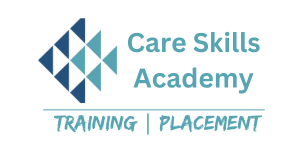In today’s technology-driven world, printed circuit boards (PCBs) are the backbone of virtually all electronic devices, from smartphones and computers to industrial machines and medical equipment. As technology evolves, so does the need for skilled professionals who can diagnose, troubleshoot, and repair PCBs. A PCB Repairing Course is your gateway to gaining essential skills and establishing a lucrative career in electronics.
Why Pursue a PCB Repairing Course?
- High Demand for PCB Technicians: With the exponential growth of electronics, the demand for qualified PCB technicians is increasing across industries such as telecommunications, automotive, consumer electronics, and manufacturing. Skilled professionals who can repair and maintain PCBs are critical to keeping devices and systems running smoothly. Completing a PCB repairing course positions you as a valuable asset in this booming field.
- Comprehensive Skill Development: A PCB repairing course equips you with both the theoretical knowledge and practical experience needed to excel in the industry. You’ll learn how to troubleshoot PCB issues, replace faulty components, and restore electronic devices to working order. Whether you’re new to electronics or looking to enhance your existing skills, this course is designed to offer comprehensive training for all levels.
- Wide Range of Applications: The skills learned in a PCB repairing course are highly versatile. From small consumer gadgets to large industrial systems, PCBs are found in almost every electronic device. Mastering PCB repair opens up opportunities in various sectors, including consumer electronics, automotive, aerospace, telecommunications, and medical equipment industries.
Key Topics Covered in a PCB Repairing Course
A quality PCB repairing course is structured to provide both foundational knowledge and hands-on training. Here are some of the key areas you will cover:
- Understanding PCB Components: Learn about the various components that make up a PCB, such as resistors, capacitors, transistors, and integrated circuits. You’ll understand how each component functions and how they contribute to the overall performance of the circuit.
- Soldering and Desoldering Techniques: Proper soldering is essential for repairing and replacing components on a PCB. The course will teach you how to safely and efficiently solder and desolder components using advanced tools and techniques, ensuring strong connections and preventing damage to the board.
- Troubleshooting and Diagnostics: Learn how to identify common PCB issues like short circuits, open circuits, component failures, and power supply problems. You’ll gain expertise in using tools like multimeters, oscilloscopes, and signal analyzers to diagnose faults accurately.
- Component Replacement and Repair: Once a faulty component is identified, you will be trained to remove and replace it with precision. This includes working with both through-hole and surface-mount devices (SMDs), which require different approaches for repair.
- PCB Layout and Design: While the course focuses on repair, you’ll also learn the basics of PCB design and layout. This knowledge helps in understanding how circuits are created, which is crucial for effective troubleshooting.
- Safety Protocols and Best Practices: Safety is a top priority when working with electronic circuits. You’ll be taught industry-standard safety measures, such as static discharge precautions and proper handling of tools and components, to prevent damage to both the PCB and yourself.
Career Opportunities After Completing the Course
After completing a PCB repairing course, a wide range of career opportunities become available to you:
- PCB Repair Technician: Work in repair centers or service departments, diagnosing and fixing faulty PCBs in various devices, from smartphones to industrial machines.
- Freelance PCB Repair Expert: Offer your services as a freelance technician, working on different projects across industries.
- Electronics Engineer Assistant: Support electronics engineers in designing, testing, and troubleshooting PCBs in R&D environments.
- Start Your Own Business: With the skills learned, you can start your own PCB repair service, providing solutions to individual clients and businesses.
Benefits of a PCB Repairing Course
- Hands-on Experience: The practical training provided in a PCB repairing course allows you to work with real-life scenarios and equipment, giving you the confidence to handle complex repairs.
- Cost-Effective Learning: Investing in a PCB repairing course is a cost-effective way to gain valuable technical skills that are highly sought after in the job market.
- Growing Industry: As the electronics industry continues to expand, so do the opportunities for PCB repair professionals. Your skills will be in demand across multiple sectors, ensuring long-term career growth.
Conclusion
A PCB Repairing Course offers a practical and rewarding way to break into the world of electronics repair. With a strong foundation in PCB components, troubleshooting, and repair techniques, you’ll be equipped to handle a wide variety of electronic devices. Whether you’re looking to start a new career, upgrade your skills, or even launch your own business, learning PCB repair opens doors to endless possibilities in the electronics industry.
Enroll today and start building your future in the exciting field of PCB repair!

